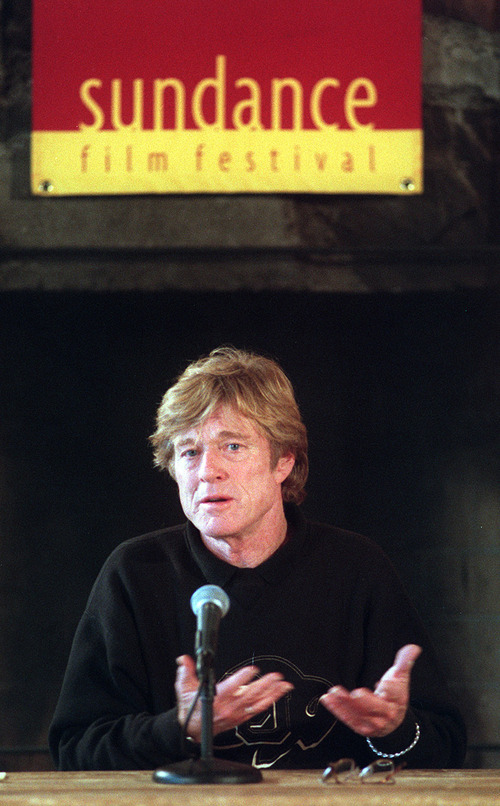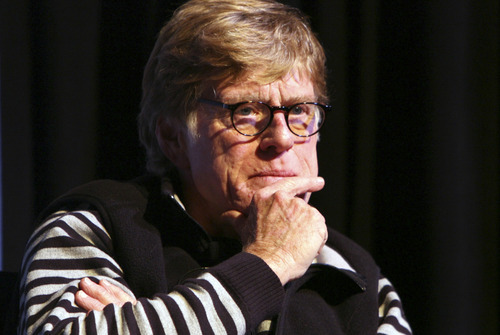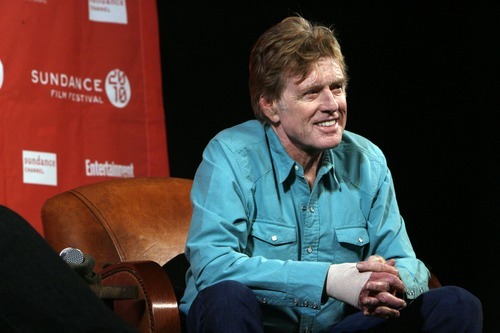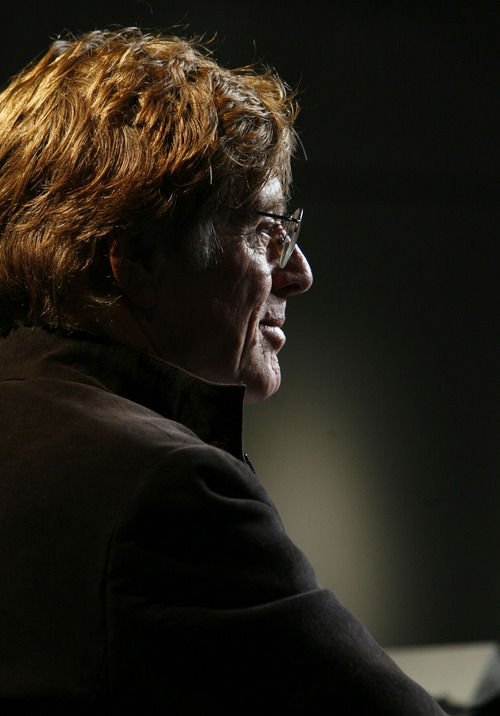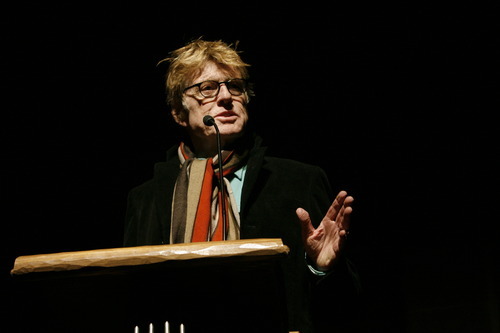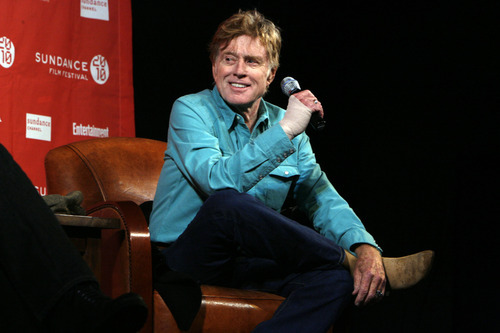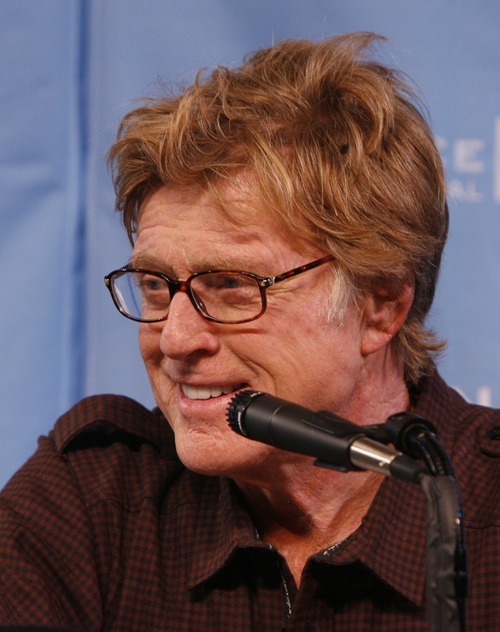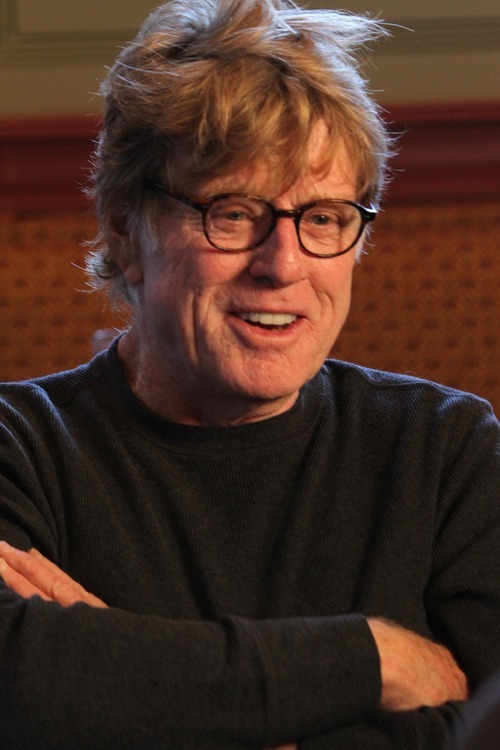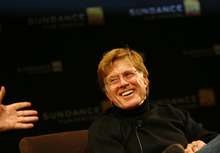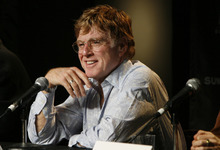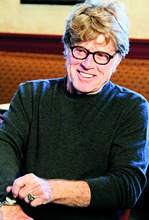This is an archived article that was published on sltrib.com in 2011, and information in the article may be outdated. It is provided only for personal research purposes and may not be reprinted.
Michael Feeney Callan was warned about the difficulty of writing a biography of Robert Redford.
The warning came from someone who would know: Redford's old friend, collaborator and sometimes rival, the director Sydney Pollack. "Sydney said this is going to be tough to do, this book, if you want to get the real Bob," Callan said.
But Callan — an Irish author with biographies of Sean Connery, Anthony Hopkins and Richard Harris under his belt — took on that challenge, which became a 16-year job culminating in Robert Redford: The Biography, which lands in bookstores on May 3.
—
Authorized, and not • The challenge, Callan said in a phone interview from his Dublin home, came from trying to see what's behind the icon of Robert Redford — the golden-boy movie idol whose rugged features and shy smile represent the American West.
But looking behind that image isn't something Redford, nor the moviegoing public, necessarily sought. "I was told it was going to happen whether I liked it or not," Redford said of the biography in a recent Tribune interview. "I cooperated for a while, but then gave up on it. … He just wasn't taking in what I was telling him."
While Redford was cooperating with Callan, the actor granted the author access to his journals (Redford keeps a notebook in his briefcase to jot down reflections) and papers from the Sundance archives. Callan also interviewed Redford at his Utah resort and his Marin County, Calif., home — as well as in Los Angeles, New York and Dublin.
"It's hard, when you've got limited time with him, to get any kind of comprehensive view of him," Callan said. "You would meet Bob, and spend a period of time, say, at a lab, and you'd see him interacting with [David] Cronenberg or [John] Landis. And then you'd see him in another scenario, where he's editing a film or sitting down with Disney marketing, and it's a whole other person."
Callan augmented Redford's input with interviews from some 300 other sources — ranging from childhood friends to early co-stars to employees, past and present, of the Sundance resort.
The resulting biography, neither authorized nor unauthorized, follows Redford through his childhood, his early efforts to become a painter, his marriage to Lola VanWagenen, his first purchase of land near Mount Timpanogos, and his career as an actor, producer and director.
—
Analyzing the man, through the movies • Callan devotes pages to every movie in which Redford starred, from his '60s breakthrough roles in "Barefoot in the Park" and "Butch Cassidy and the Sundance Kid" through his fertile '70s period, starring in "The Candidate," "The Sting," "Three Days of the Condor," "The Great Gatsby," "All the President's Men" and others.
He writes about Redford's directing debut with "Ordinary People" in 1980, and through to his most recent roles in "Lions for Lambs" and "An Unfinished Life." "It's very difficult in small periods of time to get a strong feeling of what motivates him," Callan said. That's partly because Redford is so many things to so many people: an actor, a movie icon, a director, an environmental activist, a ski-resort owner, and founder of a now-renowned nonprofit arts organization that nurtures young talent.
Callan recalls the pair's first meeting in March 1995. "We didn't talk about film or analysis or biography, because he said he didn't want to do a biography. We talked about Edgar Allan Poe and musicality," Callan said. "We had a commonality in interest in poetry. And I've since learned that that's the key to him. Bob at his best is talking about interpreting 'The Waste Land.' He's an autodidact. He's someone who has this personal quest for understanding, and connections and culture, and bringing the lessons of the past into some kind of focus in the present."
—
Four directors, four lenses • In trying to understand Redford, Callan relied on the observations of four directors — all of them now deceased — who were instrumental in his career: Michael Ritchie, George Roy Hill, Alan J. Pakula and Sydney Pollack."I was lucky to meet them and spend time at all with them before they died," Callan said. "A lot of the navigators, and the people [Redford] judged himself against, [have] disappeared."
Hill, who directed Redford in "Butch Cassidy and the Sundance Kid" (1969), "The Sting" (1973) and "The Great Waldo Pepper" (1975), had a paternal view of the young actor. "He was not amused by the fact that Bob found lateness to be OK," Callan said. "Poor old George, he was dying of Parkinson's when I was with him, but he took time out to be furious about [Redford's legendary tardiness]."
Callan called Pakula "the shrink," "because he thought a lot about Redford's nature and the era in which he flourished." Pakula directed "All the President's Men" (1976) and rewrote William Goldman's script with Redford.
"Pakula [told] me about how important the period of the '70s was, before CGI kicked in," Callan said. "He really did believe something different was going to happen in cinema, and so did Bob. They imagined that the film art would become very elevated in a different way. And that never happened. It was a busted flush, it didn't go."
In the book, Ritchie recalled collaborating with Redford on "Downhill Racer" (1970) and "The Candidate" (1972), movies that Callan refers to as "self-authored," because they reflect Redford's inner workings and his thoughts about the concept of winning.
But the director with the most insight into Redford, Callan discovered, was Pollack.
Redford met Pollack when they worked together as actors on "War Hunt" (1962), Redford's first role in a feature film. They would talk about movies and how they could do them better.
Pollack became a director, first in TV, then made his first feature, "The Slender Thread (1965) with Sidney Poitier. Pollack and Redford worked together on "This Property Is Condemned" (1966), followed by a string of six more movies: "Jeremiah Johnson" (1972), "The Way We Were" (1973), "Three Days of the Condor" (1975), "The Electric Horseman" (1979), "Out of Africa" (1985) and "Havana" (1990).
"It did feel like Lennon and McCartney," Callan said of the sometimes tense relationship — and later creative breakup — between Redford and Pollack. "It felt like there was a separation of cosmic size, monumental, colossal separation, because they let each other down."
The two men, though good friends for many years, were very competitive. Callan pointed to Pollack's 1999 movie "Random Hearts," a romantic thriller starring Harrison Ford and Kristin Scott Thomas, which came out a year after Redford directed himself and Scott Thomas in "The Horse Whisperer."
"Bob would say, 'Sydney can't handle sex,' " Callan said. "Bob restrains the Kristin Scott Thomas character and [Redford's character] Booker in 'The Horse Whisperer' in the sex scenes. And then Sydney makes 'Random Hearts' and shows Bob how to have sex with Kristin Scott Thomas."
—
'Frozen in aspic' • One contradiction in Redford, Callan found, is that he has a wry and ironic sense of humor — his favorite comedian is the late George Carlin — but Redford's attempts at comedy weren't always successful.
Redford's star-making role on Broadway and in film was in Neil Simon's "Barefoot in the Park," but he was the straight man — the uptight newlywed with a free-spirited wife, played onstage by Elizabeth Ashley and in the 1967 movie by Jane Fonda. One of Redford's least successful roles, in Callan's view, was in the Ivan Reitman comedy "Legal Eagles" (1986).
Redford likes to quote the songwriter Leonard Cohen, who said in an interview that "seriousness is deeply agreeable to the human spirit." "I think Bob is fundamentally serious," Callan said.
Redford is also a man who maintains his public persona and lets few people peek behind it. Callan recalled Redford's recent appearance on "The Oprah Winfrey Show," a reunion with Barbra Streisand, his co-star from "The Way We Were."
"When I see him doing those kinds of things, I call that '5 percent Bob,' " Callan said. "I think the truth is he developed a mechanism. He's one of those people, like Paul McCartney, who's inured to it. He has that iron façade. That's what protects him."
Again, in analyzing Redford, Callan returns to Pollack's observations. "Sydney Pollack said to me once that Bob is frozen in aspic, like a specimen in a jar," Callan said. "That's part of the deal that the iconic actor or actress makes with his audience. It's kind of a shared dream."
Twitter: @moviecricket
Through the lens
Author Michael Feeney Callan will talk about his Robert Redford biography on Monday, June 13, at 7 p.m. at The King's English, 1511 S. 1500 East, Salt Lake City. —
A gallery of Redford photos
O See The Tribune's portrait gallery of Robert Redford through the years. > sltrib.com/entertainment


